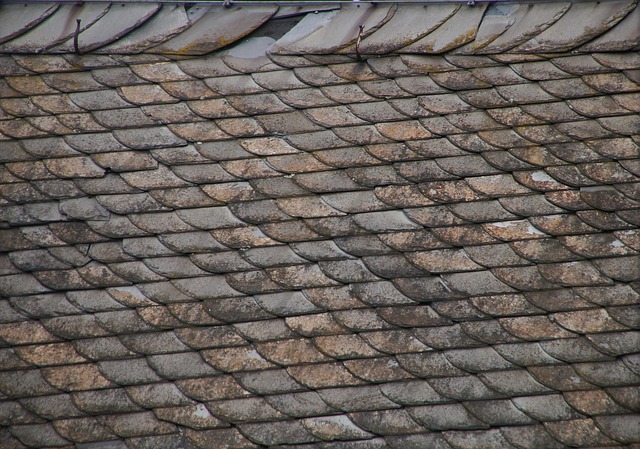A comprehensive storm-damaged roof inspection prior to emergency tarping is crucial for both safety and property preservation. This process identifies issues like missing shingles, water intrusion, and structural damage, guiding the placement of temporary tarps. Correct installation with secure fasteners and weatherproof adhesive is essential to prevent further deterioration until permanent repairs can be made. Meticulous pre-inspection and execution are key to effective emergency tarping, minimizing long-term risks and costs. For significant storm damage, professional roofing contractors offer expert assessments and solutions.
In the aftermath of a storm, a thorough understanding of storm-damaged roofs is crucial. A swift assessment determines the extent of damage, guiding immediate actions like applying emergency tarping to shield against further weather exposure. This temporary solution buys time for more permanent repairs. This article navigates through every step of the process—from recognizing damage to calling professional help—ensuring you’re equipped with the knowledge needed for a storm-damaged roof inspection and effective tarping.
Understanding Storm-Damaged Roofs: Assess the Extent of Damage
When a storm hits, it can cause significant damage to roofs, leaving them vulnerable to further exposure and compromising the integrity of the entire structure. A thorough understanding of storm-damaged roofs is crucial before applying emergency tarping as a temporary solution. This initial step involves a meticulous inspection to assess the extent of the damage. Look for missing or torn shingles, damaged gutters, and any signs of water intrusion, such as stains on ceilings or walls.
During the inspection, pay close attention to the roof’s structure, checking for broken or loose support beams, collapsed sections, or weakened fastenings. These could be indicators of more severe structural issues that require professional attention. A storm-damaged roof inspection is not just about tarping; it’s a critical step in ensuring the safety and longevity of your property post-storm.
Emergency Tarping: A Temporary Solution for Weather Protection
Emergency tarping is a crucial temporary solution for weather protection, often employed after a storm-damaged roof inspection. In cases where roofs are found to be compromised, this method provides an immediate barrier against further damage from rain, snow, or strong winds. It’s a critical step in mitigating water intrusion and structural deterioration while repairs are planned and carried out.
This process involves the swift installation of large, temporary tarps over the affected areas, securing them with straps or clips to ensure they remain in place during adverse weather conditions. Emergency tarping is not a permanent fix; it’s a stopgap measure that gives homeowners or property managers precious time to organize repairs and restore their roofs to full functionality.
Steps to Effectively Apply Emergency Tarps
To effectively apply emergency tarps, start by conducting a thorough storm-damaged roof inspection to identify weak points and areas most vulnerable to further exposure. Locating leaks, missing shingles, or structural damage is crucial as it determines where to place the tarps for maximum protection. Once identified, clear the area of any debris or obstacles that might hinder access during the application process.
Next, gather all necessary materials including high-quality emergency tarps, fasteners, and water-resistant adhesive. Ensure the tarps are large enough to cover the entire affected area without overlaps. When applying the tarps, start from the highest point of the roof, working your way down. Secure each corner and side with fasteners, ensuring a tight seal against the structure. Finally, use the adhesive along the edges for added protection against weather infiltration.
Common Mistakes to Avoid During the Tarping Process
When it comes to emergency tarping, haste can often lead to mistakes that compromise the effectiveness of the temporary fix. A common blunder is using the wrong type of tarp for the job; ensure you have a heavy-duty, weatherproof material suitable for outdoor use and able to withstand potential wind and water pressure. Improper installation is another frequent error; tarps should be securely fastened with no gaps or loose edges to prevent further damage from storms.
During a storm-damaged roof inspection, don’t overlook the importance of sealing all openings and corners meticulously. Water can infiltrate through seemingly insignificant holes, so every detail must be accounted for. Additionally, avoid leaving any sharp objects or debris exposed; these can cause damage to the tarp and potentially create entry points for water. Remember, a thorough pre-inspection and meticulous execution are key to avoiding costly repairs afterward.
When to Call in Professional Help for Roof Repairs
If your roof has sustained damage from a storm, it’s crucial to act swiftly to prevent further exposure to harsh weather conditions. While temporary emergency tarping can offer immediate protection, there are times when professional help is essential. A thorough storm-damaged roof inspection by a qualified roofing contractor should be considered if any of the following issues are present: missing or damaged shingles, signs of water intrusion, structural weaknesses, or extensive damage that compromises the integrity of the roof.
In such cases, professional intervention is vital to ensure safe and effective repairs. A licensed roofing team will assess the extent of the damage, provide expert advice, and offer tailored solutions. They have the specialized equipment and knowledge to handle complex situations, ensuring your roof is not only protected but also restored to its pre-storm condition, thereby safeguarding your home from potential water damage and structural issues down the line.
After conducting a thorough storm-damaged roof inspection, applying emergency tarping is a swift and effective measure to shield your property from further weather-related harm. While it offers temporary protection, this crucial step allows for time to plan and execute more permanent repairs. By following the outlined steps and avoiding common mistakes, you can ensure the best possible outcome during this critical process. Remember, knowing when to seek professional help is also vital; complex damage may require expert intervention to restore your roof’s integrity.
